Obituaries
A scroll through these entries illustrates the tremendous achievements that physiologists have achieved over many generations. Their valuable contributions to the discipline benefit us all.
This page provides brief notices on the deaths of Society Members as soon as we hear about them. Full PDF obituaries are presented where available.

Autur Paintal
( 1925 - 2004 )
Autar Paintal was a distinguished physiologist from India. With an MD from Lucknow University, he came to Edinburgh as a Rockefeller Fellow in 1951 and conducted PhD research there under David Whitteridge. He established that it was possible to record from nerve fibres, and dissect them under liquid paraffin – a major advance in experimental technique. His research also shed light on many aspects of vagal innervation and included the discovery, in 1955, of the J receptor in the lungs. He subsequently returned to a research position in Kanpur, at the Indian Army Medical Centre, and later became head of the Indian MRC.

John Richard Pappenheimer
( 1915 - 2007 )
John Pappenheimer’s work in capillary permeability and molecular sieving are classics in physiological literature. He contributed valuable research to a wide range of disciplines within physiology: capillary permeability, respiratory physiology, blood-brain CSF transport, the neurochemical aspects of sleep, and most recently to the understanding of the absorption of sugars and amino acids in the intestine. Born in NYC, Pappenheimer attended the Lincoln and Loomis schools. He received a BS from Harvard College and a PhD from Clare College, Cambridge, England. In 1953 he was awarded the lifetime Career Investigator position from the American Heart Association for his work on capillary permeability and in respiratory physiology. He was appointed the George Higginson Professor at Harvard Medical School in 1969. He was a member of the American Physiological Society (President 1964-1965), the Academy of Arts and Sciences, the National Academy of Sciences and Honorary Member of The Physiological Society. He published numerous articles of original work over a span of 70 years. He collaborated with colleagues from around the world, including Frank Winton, Glen Millikan, Bjorn Folkow, Manfred Karnofsky, JM Krueger, J Madara and Charles Michel.

James Edward Pascoe
( 1924 - 2011 )
Jim Pascoe was a Reader in Physiology at University College London. Having studied pharmacy at Plymouth College and the School of Pharmacy, he became a junior lecturer at the latter. He then studied Physiology, coming to UCL at the invitation of G.L.Brown, the head of department, and then joining the staff. Elected a Member of The Physiological Society (1954), he joined the Committee in 1979. He worked with Tim Biscoe, writing computer software to enable neurophysiological research, and was closely involved in parliamentary discussions about vivisection legislation in the 1980s.

Sir William Drummond Macdonald Paton
(1917 –1993)
Sir William Drummond Macdonald Paton (1917 –1993), always known as Bill Paton, was an English physiologist, pharmacologist and Fellow of the Royal Society, considered by many to be one of the world’s greatest pharmacologists. He was responsible for discovering two new classes of drug that acted on nicotinic acetylcholine receptors. His theorised multiple types of nicotinic receptor (confirmed in the 1970s) formed the foundation of the development of Decamethonium, the first specific neuromuscular blocking drug and Hexamethonium, the first drug that specifically and safely lowered blood pressure. Paton was also charged with finding the solution to the problem of convulsions suffered by deep-sea divers if they went more than 200ft below sea-level, having discovered that the high pressure causing the convulsions could be reversed with anaesthetics. He was awarded a CBE in 1968 and knighted in 1979 for his work. Paton not only made countless discoveries but was also heavily involved in numerous public committees and had a special interest in the history of medicine. He made a substantial donation to The Society that founded the Paton Prize Fund for historical research on physiology and physiologists. Paton was Honorary Director of the Wellcome Institute for History of Medicine from 1983 to 1987. Sir William Drummold Macdonald Paton died on 17 October 1993. In 1994, The Physiological Society introduced the Paton Prize Lecture, this annual lecture commemorates Paton’s support and initiatives for promoting interest in the history of scientific experiments and ideas.

John Patterson
d. 2018
It is with sadness that The Society reports the death of John Patterson on 25 February 2018. John was an Honorary Senior Lecturer in Medical Education (formerly Associate Dean, Undergraduate Medical Studies) at Barts and the Royal London, Queen Mary University (1978-2009). John taught physiology for 30 years and was three times elected ‘best preclinical teacher’. In his role as associate Dean for Undergraduate Medical Studies, he oversaw a revision of assessment structures across the programmes and as Head of Assessment he had oversight of the design, delivery and analysis of all MBBS examinations. More recently John was appointed as psychometrician and then, additionally, as Vice-Chairman of the Examinations Board, at the Society of Apothecaries of London.

Sir Stanley Peart
(1922-2019)
The Society notes with regret the death on 14 March of Honorary Member Sir Stanley Peart FRS, FMedSci, FRCP at the age of 96. Trained in medicine at St Mary’s Hospital Medical School in London, where he later served as Professor of Medicine, Peart was the first to purify and determine the structure of the peptide hormone angiotensin and to isolate renin. A trustee of the Wellcome Trust from 1975, he headed the clinical research panel which was instrumental in promoting the beginnings of the human genome project and neuroimaging research. He became a Society Member in 1953 and was knighted in 1985. Read his obituary in Physiology News here.
Christopher Peers
d. 2018
It is with sadness that The Society reports the death of Christopher (Chris) Peers on 20 May 2018. Having obtained a degree in physiology and a PhD in pharmacology from RFHMS, University of London, a period of postdoctoral research at Oxford was followed by his appointment as Lecturer in Pharmacology at the University of Leeds in 1994. From then on, an exceptionally high level of research quality and productivity led to rapid career progression and promotion to Professor of Cellular Physiology in 2002. Chris will be remembered as a remarkably enthusiastic and gifted researcher with a warmth of personality that ensured numerous enduring collaborations.

Mary Pickford
( 1902 - 2002 )
Born in India, Mary Pickford graduated in science from Bedford College, London, in 1924. While conducting pharmacological research part-time at UCL, with AJ Clarke and EB Verney, she trained in medicine and qualified in 1933. After junior clinical jobs, she took a post as physiology lecturer at Edinburgh University, where she studied oxytocin and anti-diuretic hormone in dogs. She gained a DSc in 1951 (Edinburgh) and later was given an Honorary DSc by the Heriot-Watt University. In 1954 she became a Fellow of the Royal Society of Edinburgh, in 1977 of the Royal College of Physicians of Edinburgh, and in 1966 of the Royal Society of London. In 1966, she was the first woman to hold a chair in the Edinburgh Medical Faculty. She published extensively and in 1972 was appointed Special Professor of Endocrinology at Nottingham University.
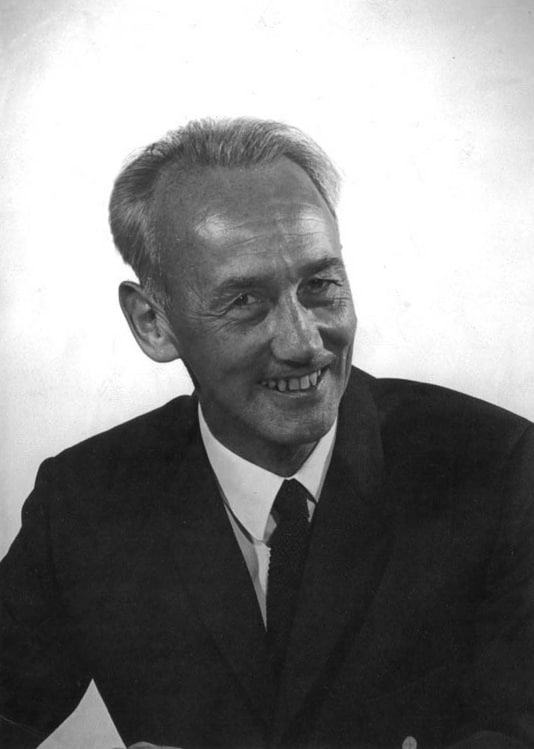
Vernon Pickles
d. 2012
Vernon Rycroft Pickles died on 27 April 2012. He became a Member in 1950.
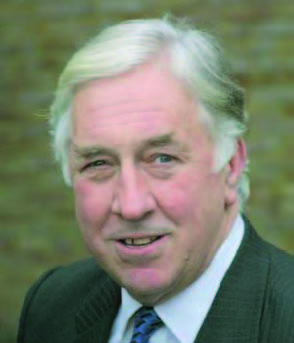
Philip Poole-Wilson
( 1943 - 2009 )
Philip Poole-Wilson studied at Cambridge and then St Thomas’ Hospital Medical School, qualifying in 1967 and joining the academic department of medicine. In 1973 he was awarded a British Heart Foundation (BHF) Fellowship to the ‘Heart Lab’ at UCLA in California, where he studied the effects of acidosis and ischaemia on myocardial function and Ca2+ exchange. He was appointed Senior Lecturer at the Cardiothoracic Institute (1976) with honorary consultant physician status at the National Heart Hospital, allowing him to investigate K+ loss from hypoxia and ischaemic tissue in both laboratory and catheter lab. Appointed Reader (1980) and given a chair by London University two years after, in 1988 he became Simon Marks and BHF Professor of Cardiology at the National Heart and Lung Institute, Imperial College. He served as councillor (1988), secretary (1990) and president (1994-6) of the European Society of Cardiology (ESC) and president of the World Heart Federation (2003-5). On retirement (2008), he was made Emeritus Professor and Senior Research Investigator.

Jeffrey T. Potts
( 1958 - 2009 )
Jeff Potts received his Bachelor of Science degree in Physical Education (1982) from the University of New Brunswick, his hometown, and a Masters of Arts degree in Exercise Science from Indiana State University in Terre Haute, Indiana. In 1986 he entered the PhD program in the Department of Kinesiology at the University of Maryland, but moved to join Peter Raven’s research program, obtaining a PhD (1993) in Biomedical Sciences (Physiology). Focussing on the carotid arterial baroreflex, he published work in the American Journal of Physiology and developed the ‘built curve’ technique of modelling the carotid baroreflex. With a postdoctoral fellowship, he then joined Artin Shoukas in the Department of Biomedical Engineering at Johns Hopkins University School of Medicine to study the role of arterial compliance and venous resistance on the carotid baroreflex control of the circulation. Subsequently, at UT Southwestern Medical Center (UTSWMC) in Dallas, he worked with with Jere H. Mitchell MD and with Julian Paton, publishing several important papers identifying the neurotransmitters within the brainstem medullary centres involved in baroreflex and exercise pressor reflex control (1995-2000).

Mike Rennie
d. 2017
Mike Rennie held the Symers Professor of Physiology at the University of Dundee for many years and was subsequently at the University of Nottingham in Derby. He was a member of the Physiological Society from 1978 and served on the Editorial Board of Journal of Physiology and on Council; he delivered the G.L. Brown Prize lecture in 2004/5. He is best known for his work in human physiology where he pioneered the use of stable isotopes in metabolic studies.

Harald Reuter
(1934 – 2022)
The Society is saddened to hear of the death of Dr Harald Reuter, who passed away at the age of 87 on 23 February in Bern, Switzerland. A German-Swiss physician and pharmacologist, Reuter made key discoveries about how the heart is regulated and how it functions.
After receiving his doctorate in medicine from the University of Mainz, Germany he went onto to discover calcium ion channels in the heart. In 1967, Reuter was the first to describe the inward flow of calcium through the cell membranes of the heart, the essential role of the calcium current for heart contraction and how the current is regulated by adrenaline. One year later, he discovered the functional role of sodium-calcium exchange in the heart.
From 1969, he worked at the University of Bern, Switzerland. Starting as Professor of Pharmacology and in 1972 became Director of the Pharmacological Institute at the University of Bern.
In his later experiments, Reuter studied ion channels as pharmacological targets and explored the role of neurotransmitters in neuronal communication. Working with colleagues at Stanford University, US, they used optical methods to measure the circulation of neurotransmitter-containing vesicles in synapses of nerve cells.
During his career, Reuter conducted cardiac research in labs across the globe, collaborating with researchers in the United States, Japan, Great Britain, and China. He has several international accolades, having won the Marcel Benoist Prize and the Jonathan Magnes Prize. He received the Award for Outstanding Research from the International Society for Heart Research, US, was awarded the Schmiedeberg-Medal of the German Society of Pharmacology and Toxicology and the K.S.Cole Award from the Biophysical Society, US. He was later awarded the Ernst Jung Gold Medal in Medicine (Life-time Achievement Award) in 2002. In 2010, he received an honorary doctorate from the University of Basel, Switzerland.
He was also an elected member at number of academic academies and societies, including The Physiological Society, the European Academy, Swiss Academy of Medical Sciences and National Academy of Sciences.
Paul S. Richardson
d. 2011
Paul Richardson was at St George’s Medical School before he retired. Paul became a Member in 1973 and was a Journal of Physiology editor from 1974 until 1978.
Anthony Ridge
d. 2022
The Society regrets to hear of the death of Antony Ridge, who died on 4 January 2022. Ridge worked in the School of Physiology, Pharmacology & Neuroscience at the University of Bristol, UK, until his retirement. He studied the neuromuscular system and his main research interest was nerve-muscle connections, investigating how nerves and muscles connect and work together during the early phases of human growth and development.

Sydney Ringer
(1835 – 1910)
Professor Sydney Ringer was an outstanding physiologist whose fundamental insights are built into the foundations of physiology. Ringer was a British clinician, who worked at University College London, UK, and its hospital from 1860 to 1900. During this time, he was also Assistant Physician at Great Ormond Street Hospital for Children in London.
Ringer’s pioneering research of the 1880s still underlies modern physiology and pharmacology. In 1883, Ringer invented the composition for a saline solution (a mixture of salt and water) that could maintain the beat of the frog’s heart. This saline recipe is referred to as ‘Ringer’s solution’ and it is now commonly used in the intravenous fluid drips in hospital wards and surgical theatres providing life-saving fluid replacement for patients. Ringer was one of the earliest members of The Physiological Society, joining in 1884.
A Brief Biography of Sydney Ringer by David Miller
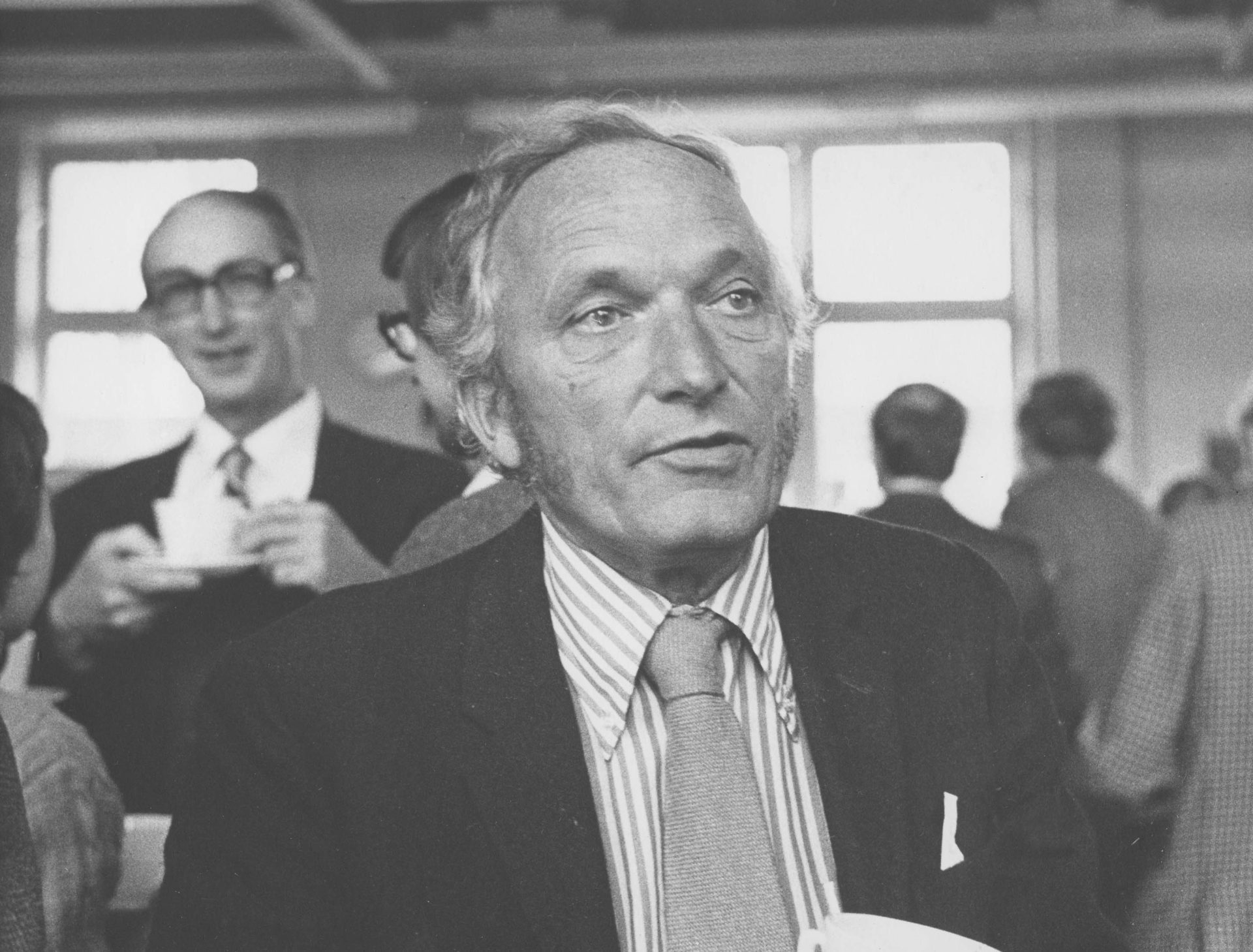
J. Murdoch Ritchie
( 1925 - 2008 )
J Murdoch Ritchie was Higgins Professor Emeritus of Pharmacology at Yale University School of Medicine, and a major figure in neuropharmacology in the second half of the twentieth century. With a BSc in mathematics & physics from Aberdeen University(1944), he became a research physicist under A V Hill at the Telecommunications Research Establishment, subsequently following Hill to University College London (UCL) in 1946. Murdoch received a BSc in physiology (1949), while working on the dynamics of skeletal muscle contraction. He soon moved to the National Institute for Medical Research at Mill Hill, receiving a PhD and DSc in biophysics (1952, 1960). He began work on the control of blood pressure by unmyelinated nerves with Bill Douglas, eventually following him (1958) to Al Gilman’s new Department of Pharmacology at Albert Einstein College of Medicine, New York. Influential papers on nerve and on local anaesthetics followed. Appointed Professor of Pharmacology at Yale (1968), he directed the pharmacology course there for second year medical students for 30 years. He became Director of the Yale Division of Biological Sciences (1975–1978), championing the establishment of its first core facility providing technical support for scientific and biomedical computing. He was also co-Director of the Interdepartmental Neuroscience Program (1993–1999). He was elected a Fellow of the Royal Society in 1976 and a Fellow of the Institute of Physics (London) in 1997.
Malcolm Roberts
d. 2021
The Society regrets to hear of the death of Professor Malcolm Roberts, who passed away on 10 December 2021. Roberts worked in the Department of Physiology at University of Cardiff, UK, from 1995 till his retirement in 2001. In 2003, the University of Cardiff established the Malcolm Roberts Prize in recognition of his vision and commitment in establishing the BSc Neuroscience Course at the university. Each year, the Malcolm Roberts Prize is awarded to the top final year biomedical student.
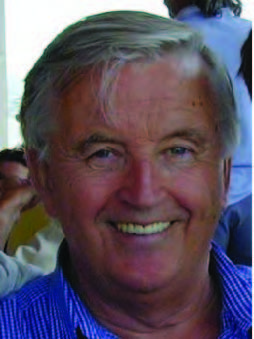
Ian Campbell Roddie
( 1928 - 2011 )
Ian Roddie led research in three major areas related to the circulation – effects of mental stress, thermoregulation and circulation of lymph. The papers he published (largely in The Journal of Physiology) are still widely quoted some 50 years later. At Queen’s University, Belfast, his career began under David Greenfield with an intercalated BSc in Physiology (1950), an MD with gold medal (1957) and a DSc (1962). Aged 35, he succeeded Greenfield as Dunville Professor of Physiology at Queen’s and subsequently served as Dean of the Faculty of Medicine and Pro Vice Chancellor. A Sherrington lecturer, he was Chairman of the Committee of The Physiological Society from 1986 to 1988 and an Honorary Member from 1998. He was also a member of the General Medical Council, the General Dental Council and the Medical Research Council and examiner for many years for the Fellowship examinations of the Royal Colleges of Surgeons. On retirement, he served as Visiting Professor at the Chinese University of Hong Kong, then Medical Director and Head of Medical Education in Jeddah. Latterly his influence extended worldwide, particularly in developing countries, when he advised the World Bank, the Asian Development Bank and various governments and institutions in some 30 countries. His many contributions were recognized nationally when he became Commander of the Order of the British Empire.
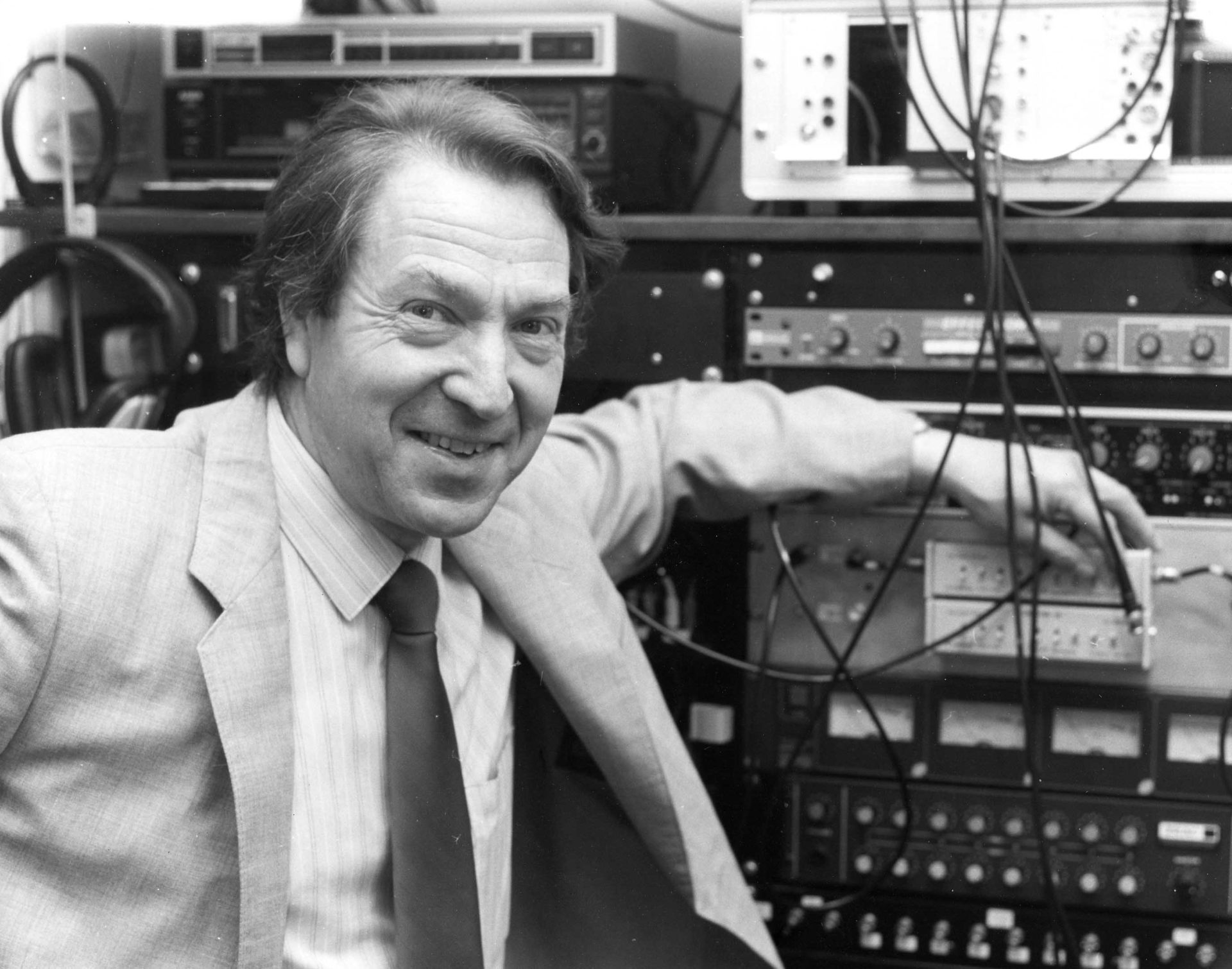
Martin Rosenberg
d. 2011
Martin was elected a Member in 1968 when he was in the Department of Physiology, Basic Medical Sciences, Queen Mary & Westfield College. For many years he was effectively the official photographer for The Society and was heavily involved in ensuring that the images in the Archives were indexed and properly stored. As a member of the History & Archives Committee, he took a very active part in the recording of Oral Histories. By doing considerable homework before every session, he was able to get the maximum value from each interviewee.

James Ryder
( 1974 - 2004 )
James Ryder graduated with a BSc in Sports and Exercise Science from South Bank University. His MSc (University College Chester) addressed the effects of hydroxy-methyl-butyrate supplementation on muscle damage following eccentric exercise and for his PhD, he studied markers of physical fitness in elite young soccer players. At the time of his death, he had recently taken up a lectureship in Lars McNaughton’s team in the Department of Sports Science, University of Hull.
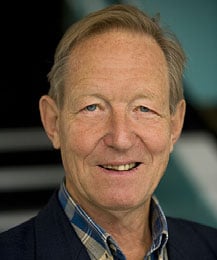
Bengt Saltin
d. 2014
The Society is sorry to hear of the death of Professor Bengt Saltin of the Copenhagen Muscle Research Centre, who passed away on 12 September. He was elected a Member in 2001 and an Honorary Member in 2006.
Melville Schachter
( 1920 - 2000 )
Melville Schachter’s early work concerned the control of gastric acid secretion, work which he initiated in 1947 as an assistant professor in the Department of Physiology at Dalhousie University, Nova Scotia. In 1950 he moved to the National Institute of Medical Research at Mill Hill, London, where he worked both with Wilhelm Feldberg and with Bill Paton, on problems related to histamine, its release and effects of antagonists. He soon coined the name “kinins” for this generic group of peptides, returning to Canada in 1965 where he became the Professor and Head of the Department of Physiology at the University of Alberta in Edmonton, a position he retained until his official retirement in 1986. His lifetime’s work on kinins was recognised in 1995, at the International Conference on Kinins held in Denver, Colorado, when he was awarded the Frey-Werle Medal, the highest honour in the field.
Tom Sears
(1929-2024)
The Society regrets to hear that Professor Tom Sears died on 19 February 2024 at the age of 95. Professor Sears, who served as President of the European Neuroscience Association, was a member of The Society. He took a leading role in our journals, working as Editor-in-Chief and Chair of the Editorial Board for The Journal of Physiology in the late 70’s.
He began his career studying physiology at University College London, UK. After graduating, Professor Sears worked at the institute’s National Hospital for Neurology and Neurosurgery, where he collaborated with several clinical neurologists. In the early 1960s, he studied with Sir John Eccles, carrying out pivotal work using intracellular recordings from respiratory motoneurones. This helped established his independent research career.
Sears transformed our understanding of the nervous system. By showing the integrative role of the motoneurone, he provided new insight about the way the nervous system processes command signals for respiratory movements and for movements in general.
Sears was curious about respiration, using it as a model motor control system to explore respiratory mechanics and the chemical control of breathing, as well as investigating other avenues. He also pursued his interest in neuroscience, dedicating his research on the physiology and pathophysiology of nerve conduction, synaptic plasticity, neural degeneration and development. The motoneurone always remained at the heart of his work.
Professor Sears’ abilities were recognised by the Institute of Neurology, which created the Department of Neurophysiology for him in 1968 (It was later renamed the Sobell Department of Neurophysiology in 1975). Sears was later awarded the position as chair of the Sobell Department of Neurophysiology, which he served in until his retirement in the mid 90’s.
Professor Sears is remembered by his colleagues as a collaborator and an inspiration to the next generation of neurologists. He trained young clinical neurologists in scientific methods, while encouraging them to pursue research at the fundamental levels as well as to dive deeper into pathological processes.
Malcolm Segal
1937-2019
The Society is sad to learn of the death of Malcolm Segal, Chairman of Division of Physiology, School of Biomedical Sciences at King’s College London. Malcolm greatly enjoyed teaching,
working with students and conducting research.
In 1963 he obtained a B.Sc. degree with honours in Physiology from University College London and completed a PhD investigating the exchange of electrolytes and other substances between the plasma and the central nervous systems, part of which was published in Brain. In 1969 he became a Lecturer and then Senior Lecturer in Sherrington School of Physiology at St. Thomas’s Hospital Medical School, London. In 1993 he became the Vice Chairman and later the Chairman of Division of Physiology at United Medical and Dental School of Guy’s and St. Thomas’s Hospitals. Finally, Malcolm became the Chairman of Division of Physiology in School of Biomedical Sciences at King’s College London, where he remained until his retirement in 2003.

Alexander A. Selyanko
( 1952 - 2001 )
Alex Selyanko, a graduate of Kiev State University, conducted life-long research into synaptic transmission in mammalian sympathetic ganglia. Working in London, Kiev and Alberta in 1984, he made major contributions to the understanding of potassium channels and the M-current.

Stephen Semple
(1927-2018)
The Society regrets to hear of the death of Member Stephen (‘Steve’) Semple. Professor of Medicine at the Middlesex Hospital Medical School from 1969-91, he was a highly respected respiratory clinician and physiologist, working with many key figures in the field. One of his important contributions was developing the oscillation hypothesis for control of breathing in exercise. A Member of the Society since 1964 he served on the Committee from 1982-6.
Professor Evelyne Sernagor
(d. 2025)
The Society is sad to announce that member Professor Evelyne Sernagor passed away on 2 March 2025. She was a leader and advocate for vision research and the community.
Professor Sernagor completed her PhD in neurophysiology at the Hebrew University, Israel, in 1988. She completed two postdoctoral positions in the US, working in the labs of M. O’Donovan (NIH) and N. Grzywacz (Smith-Kettlewell Eye Research Institute). This inspired her interest in spontaneous activity in motor and retinal neurons. In 1995, she became Professor of Retinal Neuroscience at the Biosciences Institute, Newcastle University, UK. Her inquisitive nature and imagination aided her research in biotechnology, neuroscience and physiology to investigate retinal development and repair in disease. She studied ganglion cell development and retinal human organoids, going on to develop cell-transplantation strategies to restore vision.
She will be remembered by friends, colleagues and students as an inspirational neuroscientist and compassionate human being, who dedicated her time and efforts to teaching the next generation of neuroscientists and making the field accessible to all. She mentored early-career neuroscientists in South Africa and Nigeria for 17 years with the International Brain Research Organization.

Brian Setchell
(1931-2018)
The Society notes with regret the death on 11 July 2018 of Member Brian Setchell. A vet by training, he graduated from Sydney before completing a PhD in Cambridge and, in 1982, becoming Professor of Animal Sciences at the Waite Agricultural Research Institute at the University of Adelaide. He retired in 1996. A Member of The Society since 1971, Setchell is recognised for his extensive work on many aspects of the physiology of the testis and epididymis.
Craig Sharp
d. 2018
The Society notes the death of Member Craig Sharp in March at the age of 84. Educated as a veterinary pathologist in Glasgow, his subsequent work laid the foundation of modern sports and exercise physiology in the UK. A secondment to Kenya in 1963 resulted inter alia in his record ascent of Kilimanjaro, and the first scientific measurement of a cheetah’s running speed (64.3 mph). As the scientific head of the British Olympic Medical Centre in the 1980s, and Professor of Sports Science at West London Institute of Higher Education (later Brunel University) 1994-2005, he was responsible for guiding the training of many notable UK sports champions.

Edward Sharpey-Schafer
(1850 –1935)
Sir Edward Albert Sharpey-Schafer (1850 –1935) was an English physiologist and Fellow of the Royal Society. Born Edward Schäfer, he studied under the physiologist William Sharpey and became the first Sharpey Scholar in 1873 at University College London (UCL). In 1874 he was appointed Assistant Professor of Practical Physiology at UCL where he went on to become Jodrell Professor. He was elected a Fellow of the Royal Society in 1878 at the age of just 28. Schäfer was appointed Chair of Physiology at the University of Edinburgh in 1899 where he would stay until his retirement. He was one of the nineteen founder members of the Physiological Society in 1876 and he also founded and edited [the Quarterly Journal of] Experimental Physiology from 1908 until 1933. Schäfer was knighted in 1913. He is renowned for his invention of the prone-pressure method or Schäfer method of artificial respiration.
He was very active as a facilitator, mentor, coordinator, teacher and organiser through much of his career. He had started as a histologist and always emphasised the importance of structural knowledge. He was the co-discoverer (in 1894, with George Oliver) of adrenaline (as in the adrenal-derived, circulating hormone) and he coined the term ‘endocrine’ as the generic term for such secretions. He intuited (as did a few others, independently) that insulin must exist (i.e. a pancreatic hormone to account for diabetes mellitus) and coined the name (originally as ‘insuline’). (Banting and Best actually discovered what S-S and the others had predicted). Thus, he had a founding role in modern endocrinology. He also did important early work on the localisation of function (e.g. motor centres) to brain regions. After the death of his eldest son, John Sharpey Schafer, and in memory of his late professor William Sharpey, he changed his surname to Sharpey-Schafer in 1918.
Sir Edward Albert Sharpey-Schafer died on 29 March 1935 aged 84. Funded by bequests from Sir Edward Sharpey-Schafer (1850–1935) and his daughter Miss GM Sharpey-Schafer and in memory of Sir Edward and his grandson Professor EP Sharpey-Schafer, The Physiological Society established the Sharpey-Schafer Prize Lecture. This is a triennial lecture given alternately by an established physiologist (preferably but not necessarily from abroad) and a young physiologist chosen by The Society.
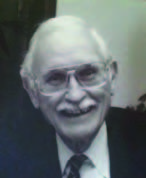
John T Shepherd
( 1919 - 2011 )
John Shepherd was a visionary Mayo Clinic physiologist. He made major contributions to understanding the regulation of the circulatory system, producing more than 300 scientific publications and four books. He received his MB, BCh, MChir and MD from Queen’s University, Belfast – joining the Department of Physiology there soon after. In 1953, he was awarded a one-year Fulbright Scholarship to the Mayo Clinic to engage in cardiovascular research, returning there in 1957. He became Director of Research there ( 1969-76), Director for Education of the Mayo Foundation, and Dean of the new Mayo Medical School (1977-83), a post which included responsibility for the Mayo Graduate School of Medicine and Mayo School of Health-Related Sciences. He then chaired the Mayo Board of Development (1983-8) and was actively involved in establishment of the Mayo Clinic campus in Jacksonville, Florida. He was president of the American Heart Association (1975-6) and a fellow of the Royal College of Physicians, and of the Royal College of Physicians of Ireland. In the course his career, he headed the American Heart Association, served as a NASA adviser and chaired the Committee on Space Medicine at the National Academy of Sciences (1965-74). He led US scientific exchanges with the Soviet Union during the Cold War, working on space physiology with scientific colleagues there.

David Shirley
d. 2011
David Shirley was a Senior Research Fellow and Honorary Reader, in the Department of Physiology and Division of Medicine (Nephrology) at UCL. David was a leading UK renal physiologist and skilled micropuncturist. His work resulted in many significant publications concerning the membrane events underlying renal tubular fluid and electrolyte transport. David joined The Physiological Society in 1973.

Luis Silva-Carvalho
( 1954 - 2008 )
Luis Silva-Carvalho completed his MD in Coimbra, Portugal (1977). Afterwards he joined his father at the Department of Physiology, University of Lisbon, conducting studies on arterial chemoreception for his PhD (1984). He continued these and other studies on autonomic function, eventually succeeding his father as Head of Department (1998). In the interim, he spent several years (1989-97) in Mike Spyer’s laboratory at the Royal Free Hospital School of Medicine, collaborating on studies involving cerebellar and hypothalamic control of cardiorespiratory function. Back in Lisbon, he established an internationally recognised programme of autonomic research. He was instrumental in the formation of the Institute of Molecular Medicine in the Faculty of Medicine in Lisbon, leading its Unit of Autonomic Neuroscience, and served as the Vice-Rector of the University of Lisbon (1995-8). He became a Foreign Member of The Physiological Society (1989), and later an Ordinary Member. He used the services of The Society, and the Research Defence Society, in countering growing anti-vivisection tendencies in Portugal.

Ann Silver
(1929 – 2023)
The Society was sad to hear of the death of Dr Ann Silver, an eminent British physiologist and Honorary Fellow of The Society, who died on 10 March. She was best known for her pioneering work on the neurotransmitter acetylcholine. Silver joined The Society in 1963 and was a dedicated member who worked on the Committee and was editor for one of The Society’s journals, The Journal of Physiology.
She studied at the University of Edinburgh, initially learning zoology, chemistry and physics. Over the course of her undergraduate degree, she focused more on physiology. During the holidays, Silver worked in the lab under the tutelage of Catherine Hebb, mainly researching cholinesterases, which remained a key interest of study throughout Silver’s life.
It was during her studies in Edinburgh that Silver attended her first Physiological Society meeting in 1952, a talk about baroreceptors delivered by David Whitteridge. In 1960, she completed a PhD in physiology as an external student at the University of Edinburgh while carrying out research at The Institute of Animal Physiology (renamed the Babraham Institute in 1993) which was funded by the Agricultural Research Council.
At The Institute of Animal Physiology, Silver continued to work with Catherine Hebb and they co-authored several papers about the acetylcholine system. Silver worked on mapping the enzymes, choline acetyltransferase (ChAT) and acetylcholinesterase (AchE) and investigating the nerve transport mechanism. While at Babraham, Silver worked with many other eminent scientists, including Sir John Gaddum, a pharmacologist and neurochemist, Marthe Vogt, one of the leading neurologists of the 20 century and Krešimir Krnjević, a neurophysiologist.
In 1974 Silver published her book, Biology of cholinesterases, which is said to be an inspiration for a generation of researchers. Her work helped to lay the foundations of the cholinergic hypothesis by mapping cholinergic systems. It also emphasised the importance of these pathways in brain areas central to cognitive and memory functions, leading to the development and use of cholinesterase inhibitors to treat Alzheimer’s disease.
After devoting most of her life to lab work, Silver took on the role of information officer to improve public relations and awareness about vivisection. She was involved in drafting the Animals Act 1986, which regulates how animal experiments are carried out in the UK.

Lars Ole Simonsen
(d. 2021)
The Society is saddened to hear of the death of Lars Ole Simonsen. Simonsen studied medicine at the University of Copenhagen, Denmark from 1954-1962 and went on to do a postgraduate course in basic medical science. After which, he took up a position at the University of Copenhagen, Denmark, where he stayed until 2012.

John Sirs
( 1926 - 2005 )
John Sirs was Professor of Biophysics at the University of London between 1979 and 1991. He read physics at Durham University, later moving to the Department of Colloid Science, Cambridge as research student supervised by FJW Roughton. After gaining his PhD, he became interested in the physiology of blood gas transport, research he continued after his appointment as Lecturer in Physics at St Mary’s Hospital Medical School (1960), under SG Rowlands. Over the next twenty years his research addressed the physical properties of erythrocytes, often in collaboration with clinicians. Having taught physics for some years, he later developed a statistics course for medical undergraduates, which he ran for two decades.

Henry Michael Snow
(1935 - 2020)
The Society has heard with sadness of the death of member Michael Snow on 26 June 2020 at the age of 85. Developing surgical skills in cardiovascular function as a technician at Leeds General Infirmary, he completed a PhD in 1969 with Ron Linden at the Cardiovascular Unit at the University of Leeds. Moving in 1974 to the Imperial Chemical Industries (ICI) Pharmaceuticals Division, his large mammal experience contributed to the development of a wide range of anti-hypertensive drugs. In 1993, Mike relocated to the University of Cork with an honorary professorship, which enabled his continuing passion for horses, hunting and point-to-point racing. Mike Snow became a member of The Society in 1974 and a Fellow in 2016. He was awarded the Conway Medal of the Royal Academy of Medicine in Ireland in 2003.
Nicholas Standen
1949-2020
The Society has heard with much sadness of the death of Honorary Member Professor Nicholas Standen FMedSci on 2 April after a long illness. Born in Oxford, Nick completed his PhD in 1974 in the Zoology Department at Cambridge with Rob Meech, describing the first calcium-activated K current recordings at a Society meeting the previous year. After postdoctoral work at Nottingham, he was appointed in 1976 as a Lecturer at Leicester where he remained until he retired in 2010. His seminal work with Peter Stanfield identified the ATP-dependent K channel. A founder of a major ion channel group in the UK, Nick Standen was Editor-in-Chief of The Journal of Physiology from 1991-94. He was elected to the Academy of Medical Sciences in 2001. Read his obituary in Physiology News here.

Ernest Starling
(1866 –1927)
Ernest Henry Starling (April 1866 –1927) was an English physiologist and Fellow of the Royal Society. Starling joined Guy’s Hospital, London in 1882, earning his qualifying degrees of MB, in 1889 and MD in 1890. Starling worked part-time from 1889 to 1899 at Guy’s and also lectured at the London School of Medicine for Women. In this period, after research experience in various German laboratories, he established ‘Starling’s Principle’ which describes tissue fluid formation and the importance of osmotic forces across the capillary wall. He was next appointed Professor of Physiology at University College London, serving from 1899 to 1923. It was here he met Sir William Maddock Bayliss, with whom he first described gut peristalsis and then discovered the peptide hormone secretin. This first discovery of a hormone significantly broadened the fields of research in physiology. Starling was elected a Fellow of the Royal Society in 1899, but it was not until 1915 that he uncovered the findings known now as the ‘Frank-Starling law of the Heart’, which was further revised in 1919. Together with Otto Frank, Starling had independently discovered and characteristed that the stroke volume of the heart (‘cardiac output’) increases in response to an increase in the volume of blood filling the heart (‘end diastolic volume’), when all other factors were held constant and that the force of the muscular contraction of the heart is directly proportional to the extent to which the muscle is stretched. On 2 May 1927, Starling died at the age of 61 whilst aboard a ship in the Atlantic. He was buried in Kingston, Jamaica. The Physiological Society created the Bayliss Starling Prize Lecture as a joint memorial in 1960 and in 1979, the Bayliss and Starling Society was established, focusing on central and autonomic peptide functions.
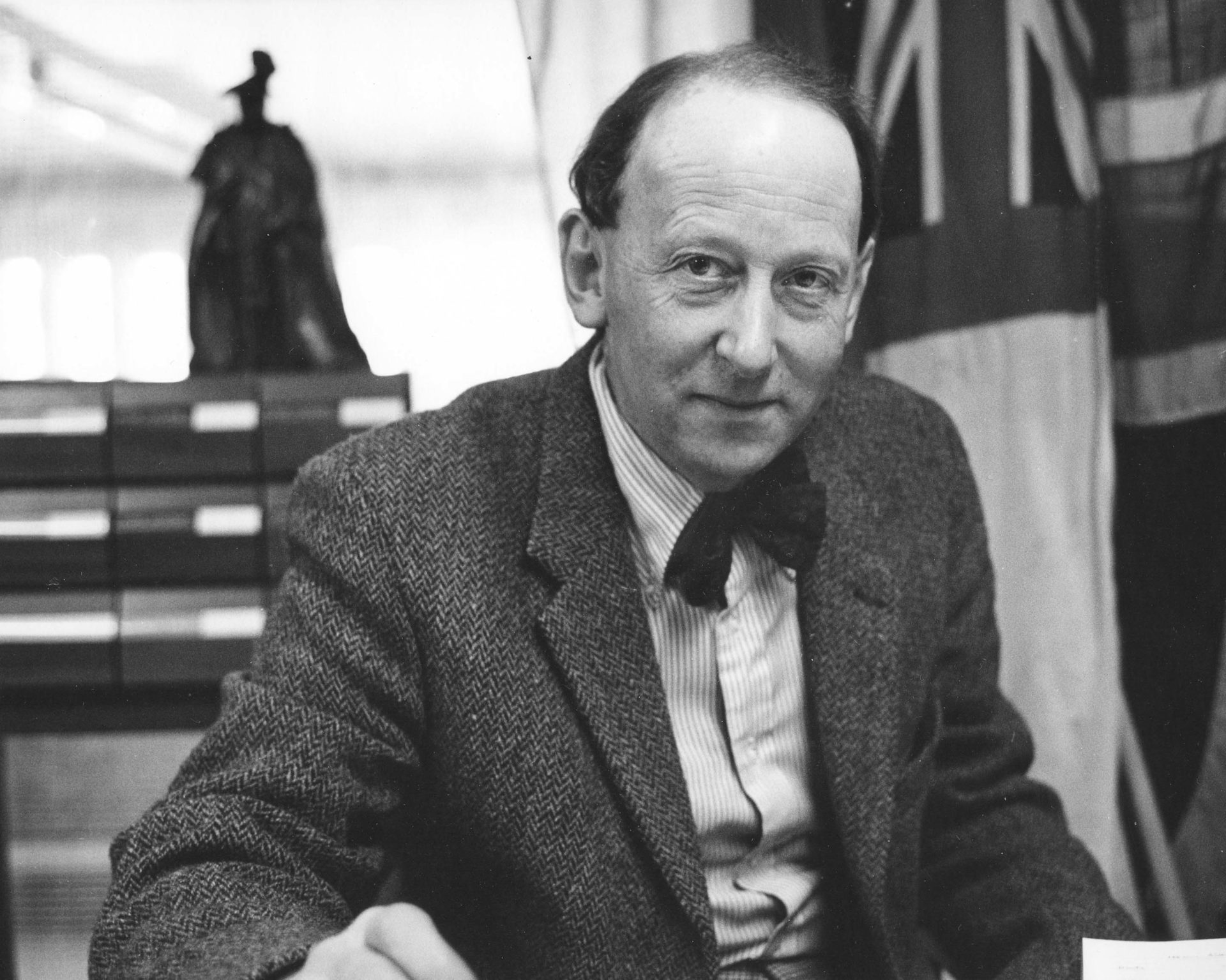
Donald Hulme Steven
( 1933 - 2005 )
Donald Steven read zoology at King’s College, Cambridge, and was subsequently appointed demonstrator in Veterinary Anatomy there (1961). A talented artist, he investigated the vascular anatomy of the placenta in the sheep and mare, guided by Robert Comline in the Physiological Laboratory, and edited Comparative placentation: essays in structure and function (1975). He subsequently became Director of the Sub-department of Veterinary Anatomy (1984-9). As a Fellow of Churchill College, Cambridge, he was the Physiological Society’s first archivist when its archive was established there in the 1970s.
Sir John Sulston
The Society regrets to hear of the death of Honorary Member Sir John Sulston CH who was awarded the Nobel Prize for Physiology or Medicine in 2002 for his work on cell lineages and on the first complete DNA sequence to be published, of the nematode worm Caenorhaditis elegans. A forceful advocate for genome information remaining in the public domain, he became the founding director of the Wellcome Sanger Centre at Hinxton. In 2002, he gave The Society’s Annual Review Prize Lecture on the ethical uses of science.
Roger Thomas
(1939 – 2024)
The Society regrets to hear of the passing of Professor Roger Thomas, who died on 17 December 2024. He was a Fellow Member with a long history with The Society, which included a period serving as Editor of Physiology News. Professor Roger Thomas was a pioneer, who gained international acclaim for developing ion-sensitive microelectrodes. He invented the recessed tip electrode, allowing tip diameters of less than 1 micrometre, which broadened the use of these electrodes in a wider range of cells.
He used these microelectrode techniques to characterise the electrogenic sodium pump in neurons and became an authority on intracellular pH and calcium regulation in large snail nerve cells.
Professor Roger Thomas embarked on his physiology career studying his undergraduate degree at University of Southampton, UK, before completing his PhD in London followed with a stint working in New York. He was Head of Physiology and the Dean of Medical Sciences at the University of Bristol, UK, and went onto being appointed Head of Physiology at the University Cambridge, UK, where he worked for a decade until his retirement in 2006.
John Warburton Thompson
d. 2012
John Warburton Thompson has died suddenly aged 88. John was a Member of The Society since 1958 when at the Royal College of Surgeons of England. Although he retired from the NHS in 1990, John continued to work in the field of chronic pain. He will be greatly missed by his friends and colleagues.

Kevin Tipton
d. 2022
The Society regrets to hear of the death of Professor Kevin Tipton, Director of Science and Research at The Institute of Performance Nutrition, London, UK. Tipton’s interest in exercise science led to a career working with athletes, where his research focused on nutrition and metabolism. He served on the UK Sport Nutritional Supplements Advisory Board and contributed to the sports nutrition programmes of a variety of national and international committees, including FIFA and the International Olympic Committee. He also carried out clinical research, developing nutrition support for patients with brain injuries and worked on the USA National Academy of Science’s Institute of Medicine, Committee for Military Nutrition Research.
Tipton was a Professor of Sport, Health and Exercise Science at the University of Durham, UK. From 2010-2019 he led the Physiology, Exercise and Nutrition Research Group at the University of Stirling, Scotland. He published over 100 papers, book chapters and review articles.
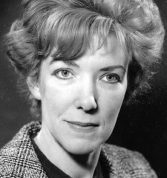
Hilda Tracy
( 1927 - 2010 )
Hilda Tracy worked in Rod Gregory’s physiology laboratory at the University of Liverpool, before studying and graduating in medicine. She subsequently joined Gregory’s academic team (1958), staying in the department until his death in 1990. She performed seminal work on the isolation and characterization of the acid-secretory hormone gastrin, the first gastrointestinal hormone to be sequenced. Subsequent investigations with Gregory laid the foundation for gastrin radioimmuno-assay to become a reliable diagnostic test for Zollinger-Ellison tumours. She retired in 1993.
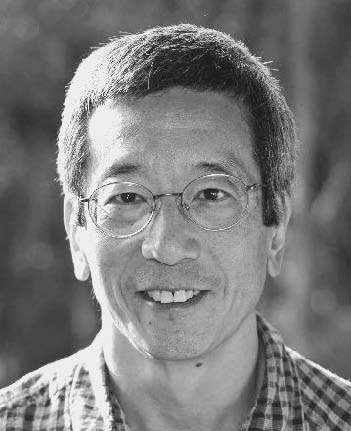
Roger Y. Tsien
d. 2016
The energetic and inspiring Roger Tsien will be greatly missed by The Society, and the scientific world. He is most famous for creating a vital research tool from green fluorescent protein. This work earned him a Nobel Prize in Chemistry in 2008. The decades of research he conducted changed the course of visualisation in molecular biology. Tsien served as professor of pharmacology, chemistry, and biochemistry at UC San Diego’s medical school for 27 years, and his passing is sad and sudden news.

Stanislav Tucek
( 1932 -2002 )
Stan Tuček had a worldwide reputation as a neurochemist and author of the 1978 monograph, Acetylcholine Synthesis in Neurons. In the mid 1960s he worked with Catherine Hebb at Babraham, and later with S-C Cheng in New York. His Institute of Physiology laboratory in Prague was extremely productive and he was involved in arranging and editing numerous important symposia on the cholinergic nervous system.
Notices of death 2025
Professor Evelyne Sernagor (March 2025)
Notices of death 2024
Brian Harvey (December 2024)
Roger Thomas (December 2024)
Christopher Charles Michel (July 2024)
Thomas Bolton (May 2024)
Robert Martin (March 2024)
Sheila Jennett (March 2024)
Tom Sears (February 2024)
Notices of death 2023
Robert Henderson (December 2023)
David Brown (October 2023)
Ronald Whittam (August 2023)
Cecil Kidd (July 2023)
David Begley (July 2023)
John G Nicholls (July 2023)
Jeanette Erdmann (July 2023)
Andrew Packard (June 2023)
KW Ranatunga (May 2023)
Gavin Pinniger (April 2023)
Ann Margaret Alderson (April 2023)
Ann Silver (March 2023)
Roger Ramsbottom (February 2023)
Kenneth Page (January 2023)
Notices of death 2022
Philippe Ascher (October 2022)
Tony Macknight (July 2022)
Ian Glynn (July 2022)
Sir Colin Blakemore (June 2022)
Sheila Gardiner(March 2022)
Richard Hellon (February 2022)
Harald Reuter (February 2022)
Kevin Tipton (January 2022)
Anthony Ridge (January 2022)
Notices of death 2021
Malcolm Roberts (December 2021)
Piers C.G. Nye (December 2021)
Derek Bergel (December 2021)
Mark Dunne (December 2021)
K A Paul Edman (December 2021)
Hisako Ikeda-Wolstencroft (December 2021)
David Ogden (December 2021)
Lars Ole Simonsen (November 2021)
John Morrison (September 2021)
Jere Mitchell (July 2021)
Frederick Noel Fastier (July 2021)
Edward Carmeliet (April 2021)
Notices of death 2020
Frank-Bowser Riley (December 2020)
Otto Hutter (November 2020)
Jan Lännergren (October 2020)
Leslie Iversen (July 2020)
Bernard T. Donovan (July 2020)
Edward M Winter (July 2020)
Horace B Barlow (July 2020)
Ronan O’Regan (July 2020)
Henry Michael Snow (June 2020).
Geoffrey Burnstock (June 2020)
Alan Williams (May 2020)
Gerhard Giebisch (April 2020)
Nicholas Standen (April 2020)
Peter B C Matthews (March 2020)
Michael Berridge (February 2020)
John Bligh (January 2020)
David A Johns (January 2020)
Notices of death 2019
Paul M Vanhoutte (August 2019)
Thomas Copland Muir (August 2019)
Sir Stanley Peart (March 2019)
To notify us of the death of a Member please email membership@physoc.org.
